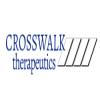Dive Brief:
- Swiss pharma Novartis AG expects accelerating sales of new drugs in immunology and cardiovascular disease will help the company return to growth in 2018 after three years of falling core operating profits.
- Overall revenues increased 1% to just over $49 billion last year, while core operating income ticked down by a percentage point. The drugmaker predicts mid to high single-digit growth in the latter category this year, driven by strengthening commercial performance.
- Shares in Novartis rose by nearly 5% Wednesday on the rosy forecast. Much of that optimism stems from rapid uptake of the company's star inflammatory disease drug Cosentyx as well as signs of life from the heart medicine Entresto, which arrived in 2015 with high expectations, but has so far disappointed.
Dive Insight:
Over the past two years, Novartis has weathered the impact of generic competition to its top-selling cancer drug Gleevec (imatinib), as well as lackluster performance from its Alcon eye care division.
This year, however, the pharma believes sales growth from newer medicines — most notably Cosentyx (secukinumab) and Entresto (sacubitril/valsartan) — will help position the company to rebound strongly.
"2018 is our return to growth and will build a foundation for the future," predicted Vas Narasimhan, currently chief medical officer but set to take the reins as CEO from the veteran Joe Jimenez on February 1.
Cosentyx and Entresto are core to that vision. "Cosentyx, Entresto and a new wave of pipeline launches look set to be augmented by a stronger than expected recovery of Alcon now also," wrote Jefferies analyst Jeffrey Holford in a Jan. 24 note.
In 2017, Cosentyx pulled in sales of nearly $2.1 billion and Entresto inched past the $500 million mark in annual revenue. While Cosentyx has been one of the fastest launches in the pharma's history, Entresto has struggled in its short time on the market. Results from the fourth quarter appeared to be the first sign of accelerating uptake, as sales of the heart drug beat consensus expectations to total $185 million for the quarter.
Despite Entresto's lackluster performance to date, Novartis bullishly predicts the drug could eventually earn $5 billion in annual sales before its patents lapse.
"We feel very good about underlying demand for Entresto," said Paul Hudson, CEO of Novartis' pharmaceuticals division, citing improved commercial access and stronger uptake among prescribers.

Hudson pointed to higher productivity from the company's salesforce helping to drive the pick-up in fourth quarter sales of Entresto. Roughly 640 new healthcare professionals began writing prescriptions for the drug each week during the period, Novartis said.
2018 will also be a key year for Cosentyx, even as the drug blows past sales milestones. Several competitors —most notably Eli Lilly & Co.'s Taltz (ixekizumab) and Johnson & Johnson's Tremfya (guselkumab) — have launched, putting pressure on Novartis to ensure favorable payer coverage for its drug. AbbVie Inc.'s experimental risankizumab could also pose a competitive threat in the near future, too.
Hudson explained that this year will begin to sort out positioning among the marketed agents.
Encouraging growth from new medicines doesn't mean all of Novartis' problems are in the rearview mirror however. Pricing pressures in the U.S. for generic drugs will pose a challenge for the company's Sandoz unit, although execs think biosimilar adoption could alleviate some of that pressure.
Additionally, Novartis faces strong competition from Pfizer, Inc. and Eli Lilly & Co. to its breast cancer medicine Kisqali (ribociclib). Narasimhan pointed to Kisqali's growth trajectory as one potential challenge if uptake is slower than expected.














